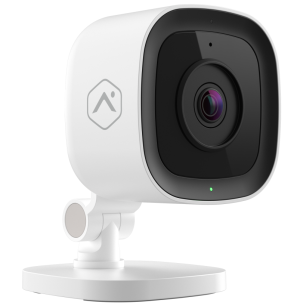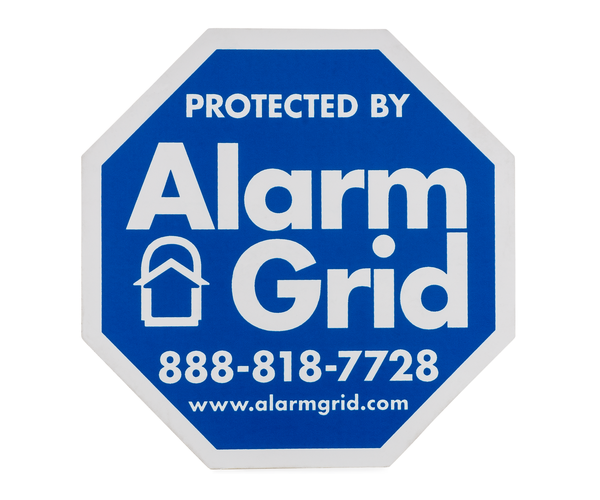Qolsys IQ Panel 2 Plus Firmware 2.5.0 Now Available
Posted By Michael GorisFirmware Version 2.5.0 for the Qolsys IQ Panel 2 Plus is now officially available and can be downloaded to any original IQ Panel 2 or IQ Panel 2 Plus. The update provides some new and exciting capabilities for the system. It is advised that anyone with a compatible IQ2 System updates ASAP.

Before we talk about the new features that come with Software Version 2.5.0, let's first discuss how to update the software on the panel. The IQ Panel 2 or IQ Panel 2 Plus System must be already running at least Firmware Version 2.0.1. The panel must be connected to a local WIFI network. Its transformer should be plugged in, and its backup battery should be charged. Once those conditions are met, you can begin the upgrading process.
Start from the main screen of the system. Click the small grey bar at the top of the screen. Select Settings > Advanced Settings > enter the Installer Code (default is 1111) > Upgrade Software > Patch Tag > enter iqpanel2.5.0 > OK > Upgrade Using Network. If done correctly, the upgrading process should begin. The process will take around (15) minutes. Please note that you must enter iqpanel2.5.0 exactly as the Patch Tag. If you enter the Patch Tag differently, then the process will not work correctly. If you do not have access to a WIFI connection, the firmware update files can be downloaded from our site.
As for the 2.5.0 Firmware itself, the following new features and changes have been made:
- New Sensor Group 25 - Non Reporting. Used with Environmental Sensors (Flood, Freeze, Temperature). Will not report to central station, but will report to Alarm.com Fixes previous issue of temperature sensors being unable to send notifications to users through Alarm.com.
- New Sensor Group 53 - Temperature Reporting. Used with Temperature Sensors for reporting to a central station.
- Added support for sump pump integration through Alarm.com if Water Management Add-On Package is applied to the account.
- Can now delete failed Z-Wave nodes from Alarm.com.
- Added software and settings that support European CE & EN Grade 2 Certification.
- New Languages: Dutch, Italian, Icelandic, Norwegian, Swedish.
- Sensor name length limit increased from 24 characters to 56 characters.
- Can now set Photo Frame Start Time to begin after One (1) Minute of inactivity.
- Panel overheat notification can now be sent to Alarm.com.
- New quick names for motion detection sensors available.
- Disabling the Panel Camera Setting now also disables Panel Camera from the Equipment List and from the Alarm.com back-end and mobile app.
- Master Code can now make language changes.
- Minor translation updates for Spanish and French (Canadian).
- Added access to Tutorial Help Videos on the last page of the Easy Install Wizard.
- Enhanced weather icon mapping between the system and Alarm.com.
- Corrected constant chime issue for Qolsys IQ Remote Keypad.
- IQ Remote will now make severe weather alert annunciations (if enabled on main panel).
- Corrected issue where IQ Remote could become stuck in Network Reconnection.
- Improved communication reliability between system and IQ Remote.
- Photo frame images can now be sent from system to IQ Remote.
- New ability to record duress alarm videos using IQ Remote built-in camera.
- Can enable/disable Disarm Photos for IQ Remote.
- Live-stream cameras can now be full screen on IQ Remote.
- Alarm image upload to primary panel has been improved.
- Check-In & Check-Out Photos for Alarm.com Wellness can be sent to Alarm.com when Image-Plus Add-On Package is applied to the account.
- Wellness alarms will now "ring" at the panel during two-way voice calls.
- New wellness alarm voice annunciations.
- New automatic volume adjustment during wellness alarms.
- Wellness alarm notifications are now automatically cleared after (12) hours.
- Now supports end of line resistor (EOLR) detection when using the auxiliary input on DSC PG9303, DSC PG9312, and DSC PG9945 Sensors.
- Sensor Group 2 - Fixed Silent now available for PowerG Panic Buttons, including DSC PG9938 and DSC PG9949.
- PowerG Sensor Supervision and Legacy Sensor Supervision (319.5 MHz, 345 MHz, 433 MHz) can now be set separately. Options from 20 minutes to 24 hours available.
- PowerG Sensor Re-Syncing and Not-Networked Status are now dynamically displayed on main page as part of sensor status.
- New setting that allows sounders in PowerG Smoke Detectors to activate during any alarm type.
- PowerG Sensors are now displayed in Sensor Test in Easy Install Wizard.
- PowerG Image Sensors (DSC PG9934P & PG9944) can now be used for visual verification for fire and carbon monoxide (CO) alarms for the central station.
- DSC PG9902 Wireless Outdoor Curtain Motion Sensor now supported.
- New ability to report tamper condition for Visonic KP-140, KP-141, and KP-160.
- The PowerG Sensor Test now shows historical signal strength for PowerG Sensors.
- Strobe lights on PowerG Sirens (DSC PG9901 & DSC PG9911B) now flash according to siren type.
- PowerG Keypad DSC WS9LCDWF9 now supports Quick Exit feature.
- PowerG Keypad DSC WS9LCDWF9 buzzer now stops during a two-way voice session.
- New support for PowerG Repeater DSC PG9920 AC Loss notification.
If you have any questions about Firmware Version 2.5.0, or if you would like to learn more about our monitoring services, please email us at support@alarmgrid.com. We operate support hours from 9am to 8pm ET M-F. We look forward to hearing from you!








 Business owners who want to take the turret camera route have the perfect option in the ADC-VC836. This is a camera that you can certainly trust to monitor your business and keep an eye out for any suspicious or unwanted activity. The camera is great for use with the Qolsys IQ Panel 2 Plus, as it offers 1080p recording, an IR night vision range of ~95 feet, a 0 to 75 degree tilt function, and power over ethernet (PoE). It is protected against environmental elements with its IP67 rating. You will also appreciate the camera's modest size at just 5"D x 3.8"L. And with its tamper resistant exterior, nobody is going to disable the ADC-VC836 and break into your business without you knowing about it!
Business owners who want to take the turret camera route have the perfect option in the ADC-VC836. This is a camera that you can certainly trust to monitor your business and keep an eye out for any suspicious or unwanted activity. The camera is great for use with the Qolsys IQ Panel 2 Plus, as it offers 1080p recording, an IR night vision range of ~95 feet, a 0 to 75 degree tilt function, and power over ethernet (PoE). It is protected against environmental elements with its IP67 rating. You will also appreciate the camera's modest size at just 5"D x 3.8"L. And with its tamper resistant exterior, nobody is going to disable the ADC-VC836 and break into your business without you knowing about it!


